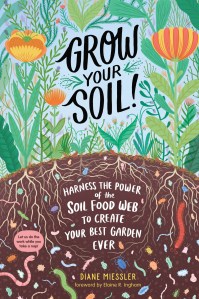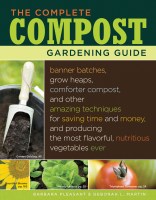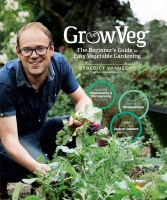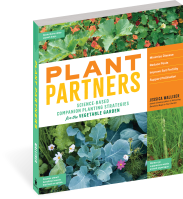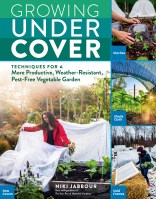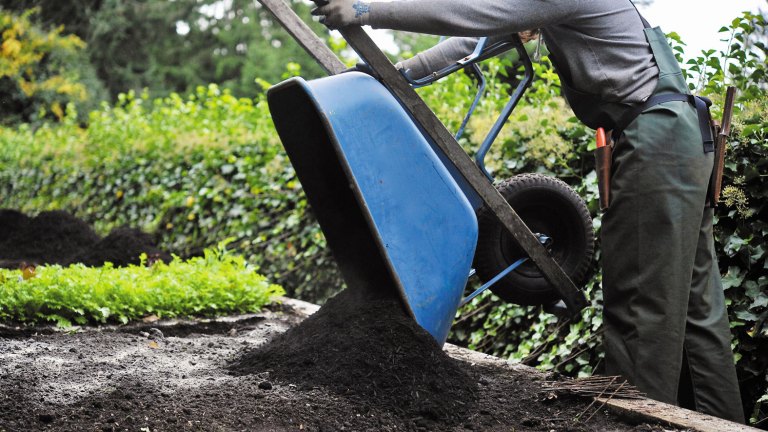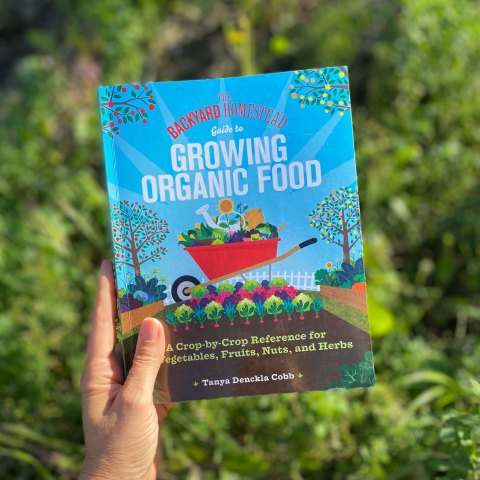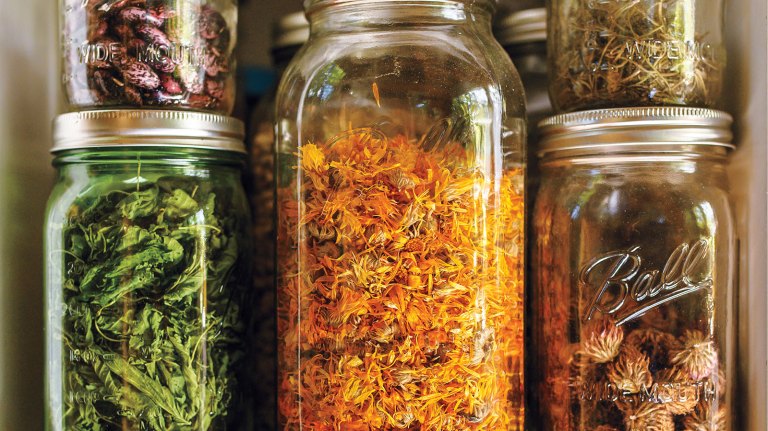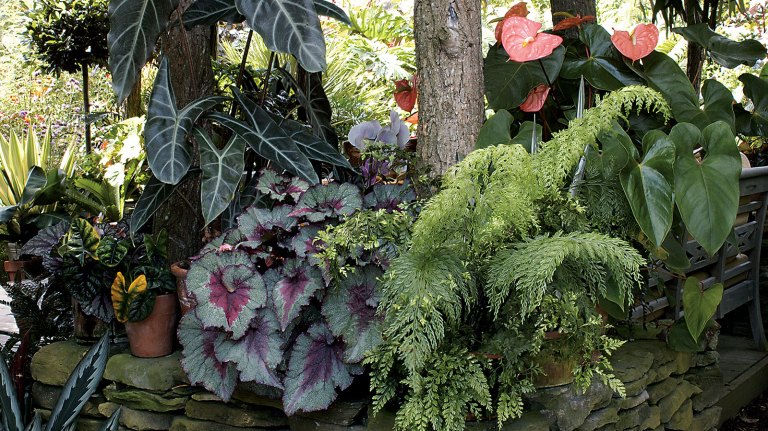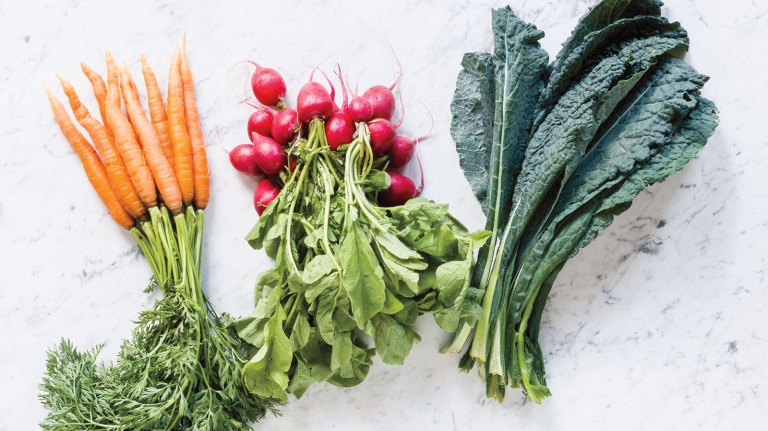How to Build a Compost Pile
You can build a compost pile. It isn’t complicated (I promise), and it does many wonderful things for your soil!
Build a compost pile in four easy steps—pick the right spot, start piling, water it, and turn it. It’s that simple. Read on for tips from Grow Your Soil! guaranteed to save you time.
Step 1: Pick the Right Spot
Find a spot that is near a hose with a nozzle. Water needs to be easily and permanently available—you don’t want to have to drag a hose over to wet your compost. You know you’re not gonna do it.
Ideally, the compost spot should also have two adjacent, compost pile–sized areas so you can turn the pile to and fro every week or so. Turning a compost pile completely while moistening it mixes textures and microbes, encourages microbial growth, and aerates it to keep stinky anaerobes at bay.
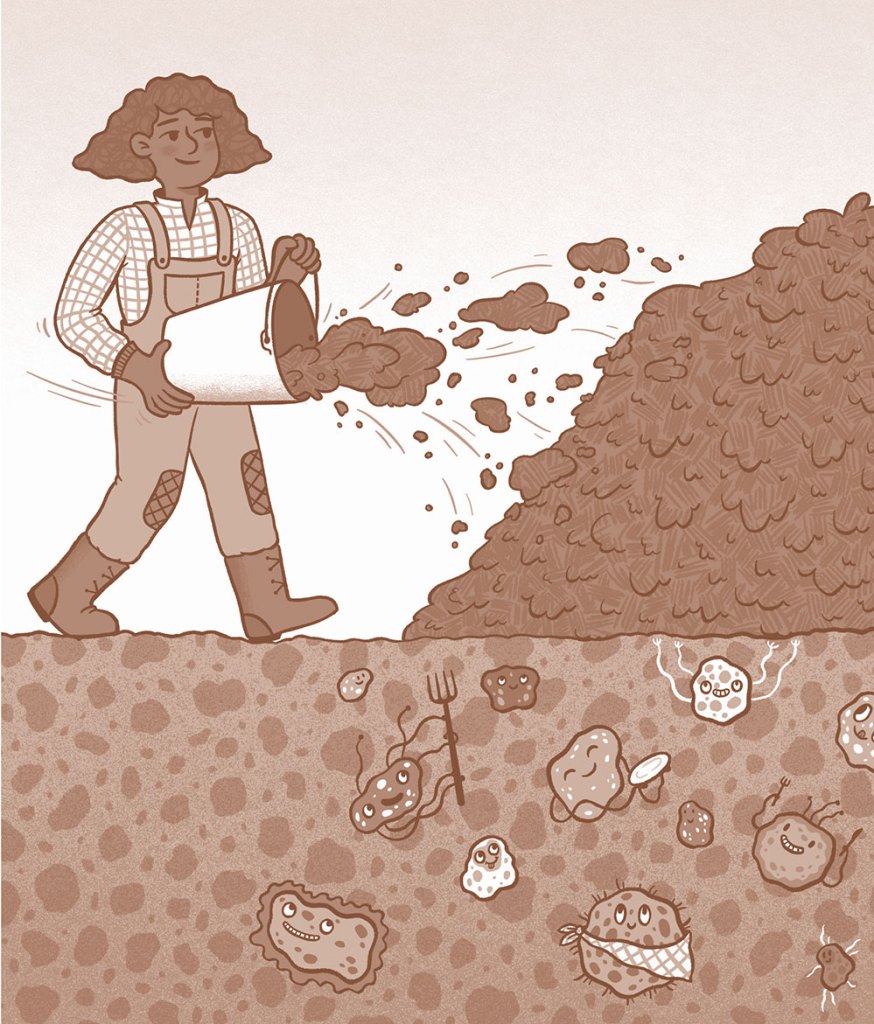
Step 2: Start Piling
Use whatever organic matter (anything that is currently or formerly alive) you have or can find. You’ll need two kinds:
“GREENS.” These are things that add nitrogen and rot quickly:
- Kitchen waste. Vegetable peelings, apple cores, that limp celery that’s been in the “crisper” since you used a few stalks of it for stuffing last Thanksgiving
- Yard waste. Grass clippings, leaves you’ve raked up (or, preferably, that your neighbor raked up and thoughtfully bagged for you), prunings from shrubs and trees, spent plants from your vegetable garden
- Some types of manure. Manure from farm animals (dog and cat manure has too many microbes that can make humans sick)
“BROWNS.” This is stuff that’s brown and dry:
- Straw
- Newspapers
- Paper from your shredder (paper comes from trees, which used to be alive)
- Dead leaves, pine needles, or most any other organic matter that has fallen on the ground
When you build a compost pile, you’re shooting for a mix, about three parts by volume of brown, dead matter to one part of fresh green stuff. The greens feed microbes and other members of the soil food web. Browns won’t provide as much food for microbes, but they will give structure to your compost, keeping it from becoming a compacted, stinking mess. Woodier brown materials also contain more lignin, the hard structural cells that turn into humus.
None of the ingredients should be much more than 4 inches long. Longer pieces create a tangled mess that’s difficult to turn. Smaller pieces are easier to turn and compost faster; you can chop kitchen waste and yard trimmings into 1-inch pieces to further accelerate the process.
Layer whatever you have to start with in a little (or big) heap, mixing up the ingredients.
Step 3: Water It
Water each layer as you go. It should feel as moist as a wrung-out washcloth—damp but not wet on your skin. It shouldn’t leave a wet spot on you when you touch it. Keeping the level of moisture right is key. Too wet, and the pile becomes stinky. Too dry, and it sits there and refuses to rot.
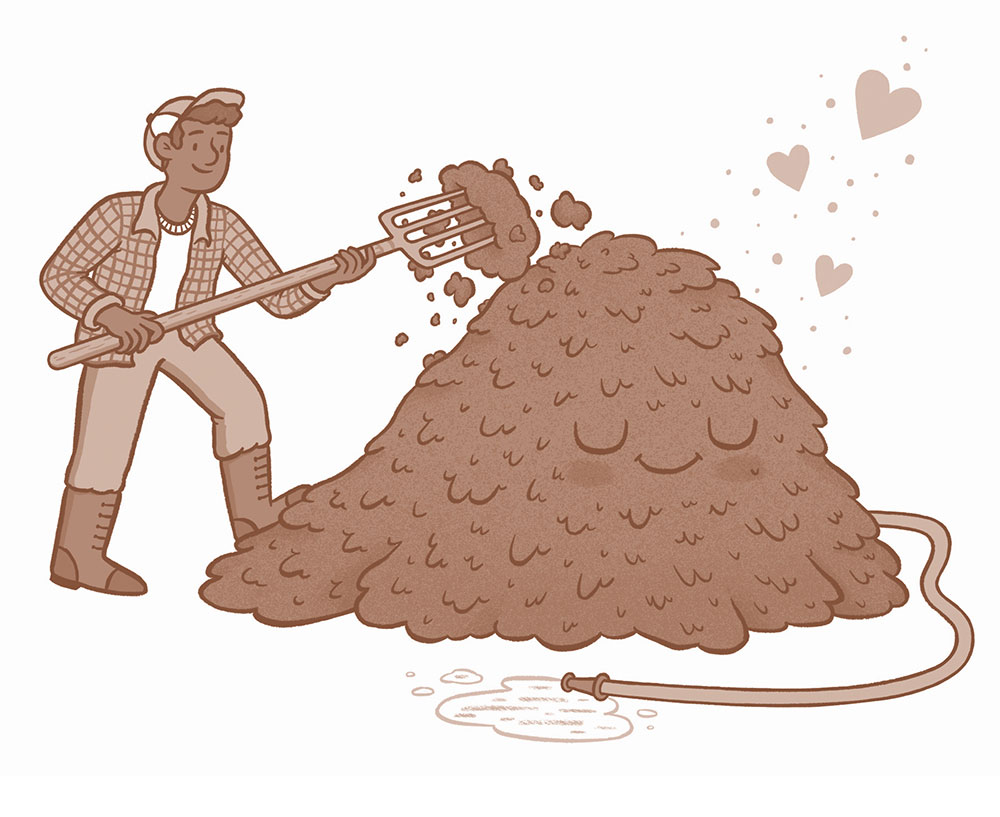
Step 4: Turn It
Turn the pile once after you build the layers, to make sure everything is nicely mixed. Check the moisture level when you do this, and correct it, either with a squirt of the hose or by adding dry material—straw, dry leaves, paper from your shredder, or torn-up newspaper.
Turning your pile, while correcting moisture, is the most important thing you can do for your compost pile. This gives good germs—the real workhorses of compost—what they need to go forth and multiply. When they do that, they turn raw materials into humus and nutrient-rich compost. To quote a song from the Great Folk Scare of the ’60s: “turn, turn, turn.”
Best of all, if you fail at compost husbandry, you’ll still eventually have compost. Weather and time will decompose anything on the ground. The process won’t bring you joy the way an active compost pile does, but it will manage to rot without your help.
Interested in learning more? Grow Your Soil! will teach you how to harness the power of the soil food web to create your best garden ever.
And be sure to share your compost pile projects with us @aginghippiechickgardening (yep, that’s me!) and @storeypub using the hashtags #growyoursoil and #storeypublishing.
EXCERPTED AND ADAPTED FROM GROW YOUR SOIL!© 2020 DIANE MIESSLER, ILLUSTRATIONS © KRISTYNA BACZYNSKI
Learn More
Related Reads
Featured Titles
